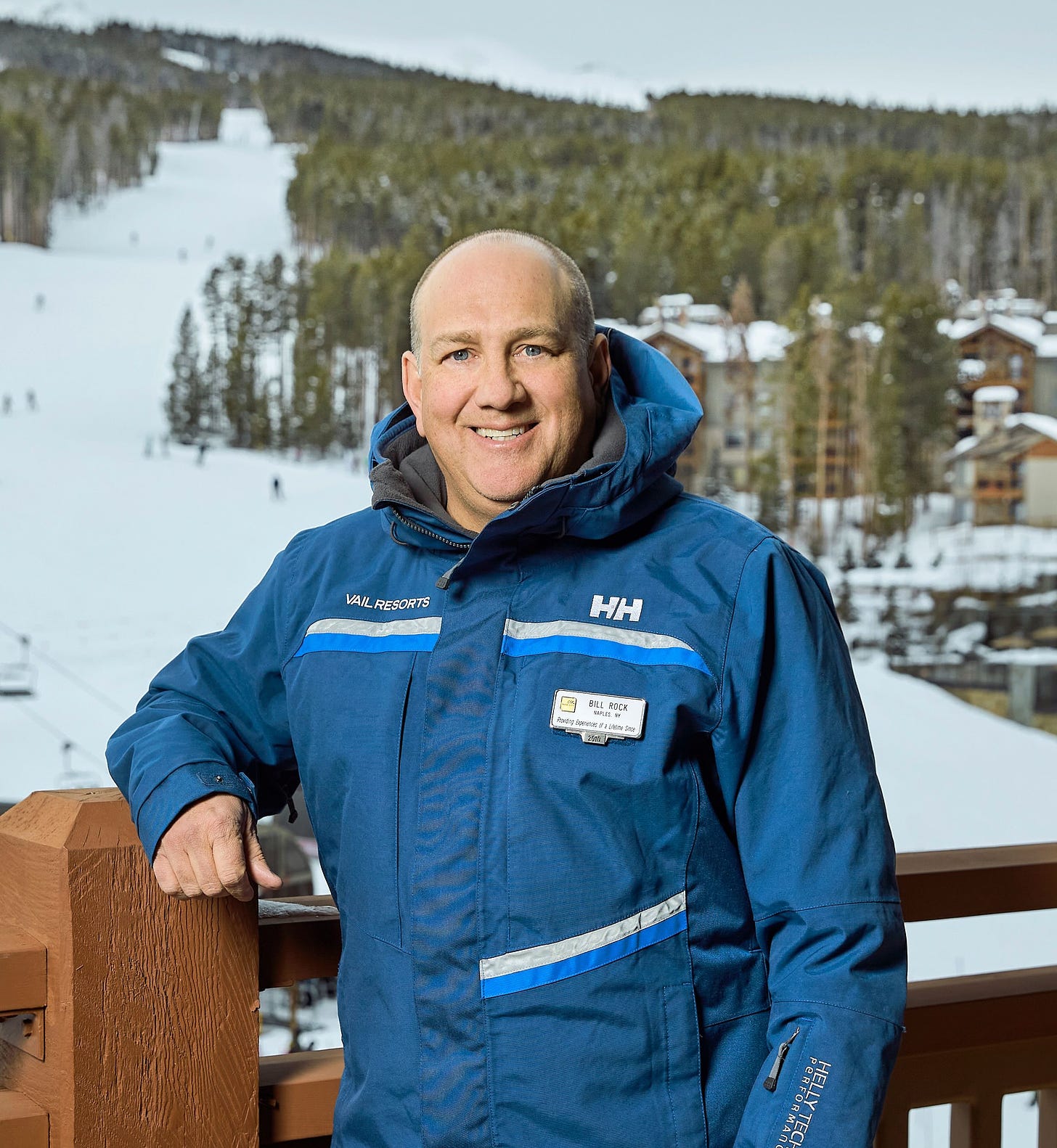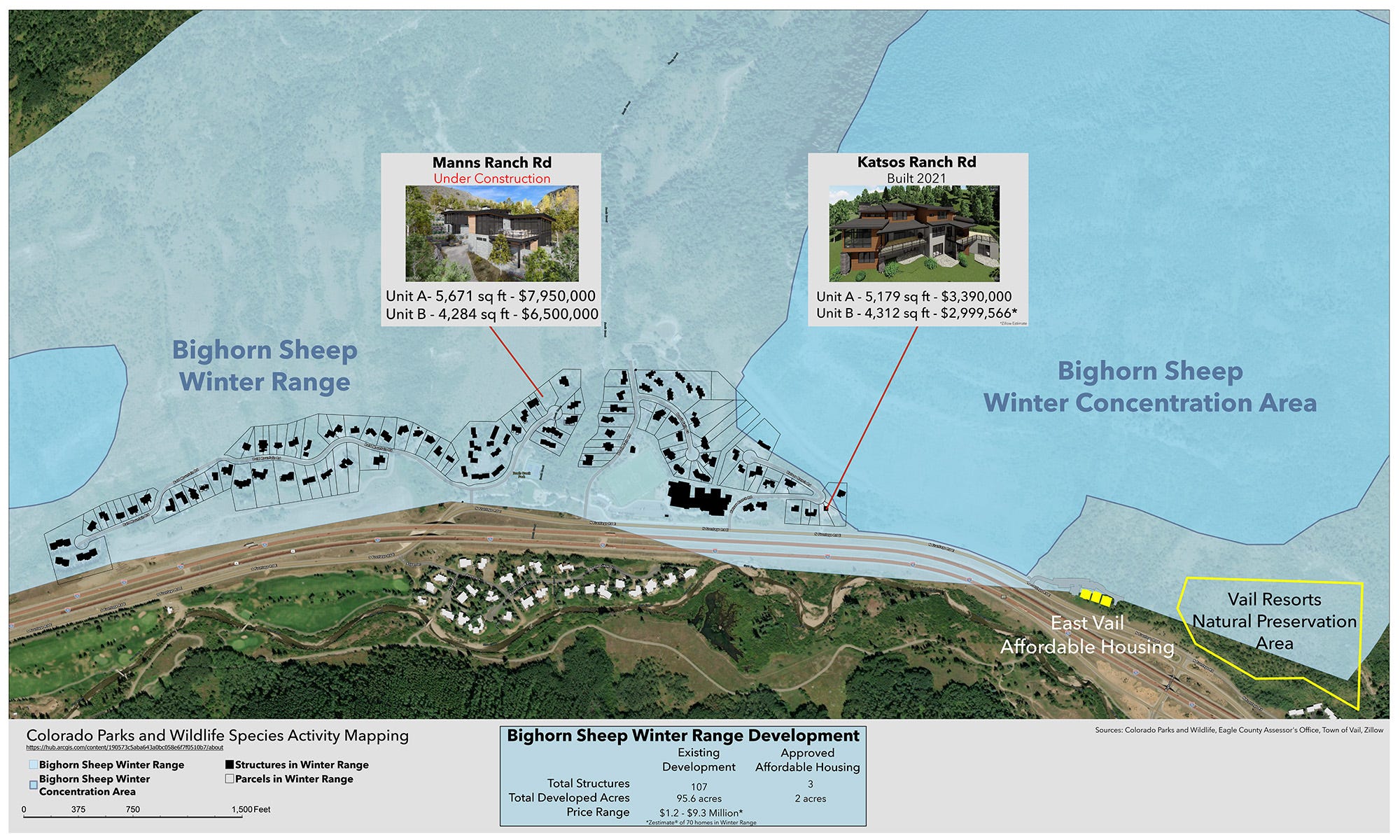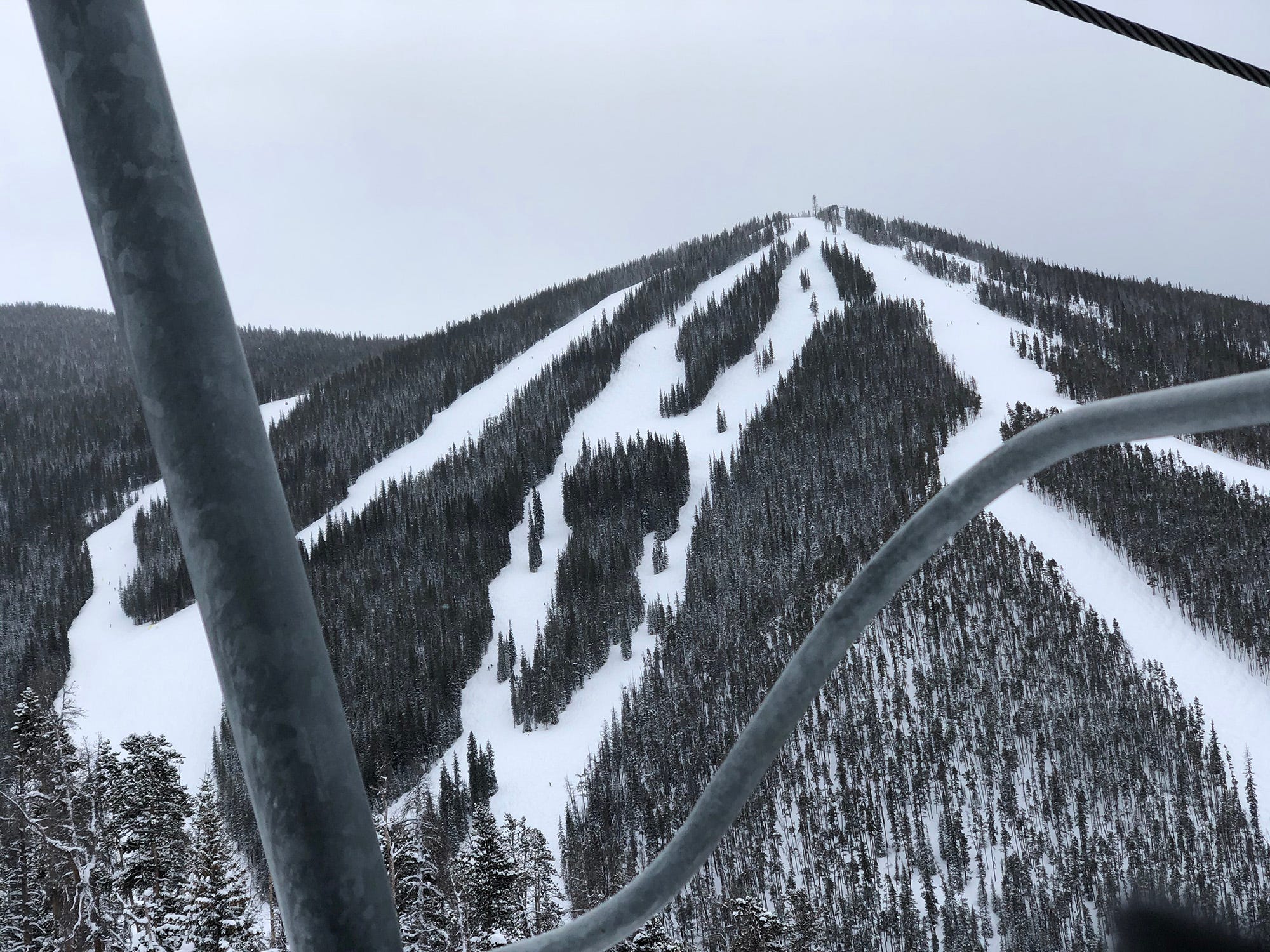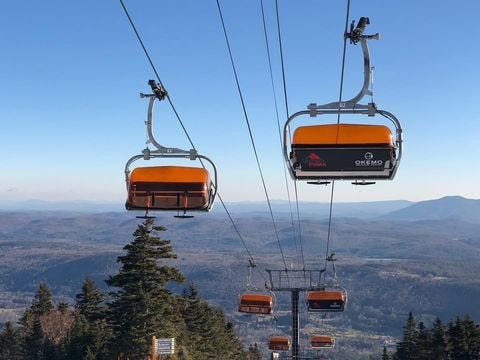Who
Bill Rock, Chief Operating Officer of Vail Resorts Rocky Mountain Region and Executive Vice President of the Mountain Division
Recorded on
June 13, 2022
About Vail Resorts’ Rocky Mountain Region
This is it, the inner empire. Where hyperbole suits just fine. This is why people in suburban Detroit buy an Epic Pass. To get here. “Aspirational.” That’s Rock’s word for his half-dozen cloud-pokers. It fits. Even for Keystone, a favorite target of the Cool Kids who only ride Snowbird Brah. Whatever. Keystone is great - it’s bigger, as you can see, than Breck, and it’s about to get larger with the Bergman Bowl expansion, opening next winter.
Why I interviewed him
For many, just visiting these snowy kingdoms is not enough. Relocation becomes the only option. They turn west, to the mountains, and there they hack out whatever life they can. I’m not talking Grizzly Adams here. They’re not building log cabins and churning their own butter. But housing in most Western ski towns - and certainly the ones listed above - is limited and expensive. Wages are, historically, low. Skiing is expensive, always.
For a long time, the skiing was enough to offset the other burdens. Then things changed. Covid, of course. But less discussed is the drying up of immigrant visas of the sort that destinatin resorts had long used to staff front-line positions. The rising labor movement. Workers, suddenly empowered, no longer had to settle for the fast-food wages of decades past. Vail had to adjust, and in March, the company rolled out a $20 minimum wage for frontline workers next season.
But another very real factor contributing to last season’s labor shortage was a sudden and dramatic re-ordering of the mountain-town housing market. White collar workers, liberated by remote work, moved en masse to the mountains. This further distorted an already unbalanced market, driving out whatever shadows of affordability remained.
So Vail’s plan also included a significant investment in affordable worker housing, on land that - the company emphasized - it already owned. If that sounds like a straightforward proposal, then you are unfamiliar with the workings of U.S. America, where all easy things are hard and all hard things are impossible. Rock, I figured, could help us at least understand the current conditions impacting resort-town decision making.
What we talked about
The shift to midweek skiing and what it means for Vail and the Epic Pass; Vail’s 2021-22 operational challenges and successes; chasing the military’s camaraderie and sense of purpose until finding it at Bristol; a regional hopscotch leading to Vail; Northstar as Vail’s executive talent incubator; the company’s monster employee-investment initiative announced in March; how Vail decided on a $20-an-hour-minimum wage for next season; beefing up the HR staff and what that means for the future of the HR tool (commonly referred to as Vail’s “HR app”); owning last-year’s employee-support challenges; the company’s new flexible work policy; why Vail Resorts’ ski area social media accounts have seemed more lively over the past several months; why Vail’s 165-bed employee housing project has stalled in East Vail; “people have gotten really good at gumming up the works”; luxury townhomes go unprotested but suddenly everyone is very concerned about bighorn sheep when it comes time to build affordable housing; the potential of the Ever Vail parcel and if there is a better way to build; updates on employee housing developments in Park City, Whistler, and Okemo; Vail’s $300 million-plus 2022 lift investment and what that portends for the future; “I don’t know if we can find 21 lifts to do every year”; thoughts on why Vail hasn’t sold a lift in several years; the current status of the Bergman Bowl expansion at Keystone; thoughts on new lifts going in at Vail and Park City; “in a town that has over 70 lifts, to do two replacement lifts should really not be controversial at all.”
Why I thought that now was a good time for this interview
Last month, I wrote a long piece about a dispute between the Town of Vail and Vail Resorts:
Unfortunately, we have entered an era in which absolutism reigns. As the ski industry housing crisis accelerates to levels that are endangering the viability of lift-served skiing as a sustainable enterprise, the town of Vail last week activated the nuclear option to block Vail Resorts’ long-planned affordable housing project near Vail Mountain. Per Jason Blevins in The Colorado Sun:
The Vail town council late Tuesday voted to condemn a parcel where Vail Resorts plans to spend $17 million to build affordable housing for 165 workers. Dozens of Vail Resorts executives, employees and managers crammed into the council’s chambers Tuesday night as the council heard passionate support for both housing and wildlife. Ultimately the council voted 4-3 to approve a resolution that gives the town the ability to seize ownership of the 23-acre parcel and prevent any development as a way to protect a bighorn herd that winters in the south-facing aspen groves along Interstate 70.
“I’m disappointed you’ve been backed into a corner and have to consider this resolution tonight,” said Terry Meyers, the executive director of the Rocky Mountain Bighorn Society. “Please make the decision to protect the bighorn sheep herd and move forward to find other options for affordable housing in the Vail Valley. The sheep have to have this. They can’t go anywhere else.”
Exactly which corner the council members have been backed into is unclear: this same council (made up of different representatives), approved this project in 2019, and helped defend it in court in 2020. Vail, which owns the land, has promised to develop just six of the 23 acres. To protect the herd on the remaining land, Vail Resorts “partnered with wildlife experts and Colorado Park & Wildlife to develop an extensive mitigation plan, including funding for long overdue habitat rehabilitation,” and has earmarked $100,000 to implement that plan, a company representative told me. The project underwent “an extremely thorough environmental review process,” the representative added.
Meanwhile, more than 100 luxury homes already fill 95.6 acres of this supposedly sacred bighorn habitat. Vail’s proposed development is the three tiny yellow boxes labelled “East Vail Affordable Housing” in the image below:
“Vail needs housing now – not development that might happen in five years,” read a statement supplied by Vail Resorts to The Storm Skiing Journal on April 25. “If the Town can support luxury homes in East Vail, then it can support affordable housing. We will continue to aggressively pursue this affordable housing project for the hard-working employees in our community.” …
The suggestion that a herd of sheep that has managed to negotiate nearly 100 acres of mansionland developed amidst their territory over the past several decades would suddenly be thrust to the brink of extinction from the addition of six acres of dense housing hard by the roadside is absurd. This whole action by the town feels disingenuous and petty, a because-we-can temper tantrum rooted in the vaguely expressed notion that Vail Resorts has been a disrespectful negotiator.
While the town has not yet seized ownership of the land, the strident act by four precious council members all but assures that the legal fistfights will howl on for years. The brazen seizure of private land could ignite a fire that burns all the way to the Supreme Court, an absurd act of overreach that could wind up damaging future environmental efforts by stoking the business-friendly court majority to streamline development approvals. And in the meantime? Opponents of the plan continue to peddle platitudes about the importance of affordable housing.
You can read the full thing here:
Meanwhile, four people who apparently have nothing better to do have been stalling Vail’s planned Park City lift upgrades. Per the Park Record:
The PCMR project would replace the current Eagle and Eaglet lifts with a high-speed, six-person detachable lift. The resort also wants to upgrade Silverlode Express from a six-person to an eight-person, high-speed lift, which would make it parent company Vail Resorts’ first chair of its kind in North America.
The people who filed the appeal, Clive Bush, Angela Moschetta, Deborah Rentfrow and Mark Stemler, argued the proposal should’ve been exempt from receiving a staff-level administrative conditional-use permit because the upgrades would exceed PCMR’s comfortable carrying capacity (CCC) and should be voted on by the Planning Commission instead. They also argued the application should not have been approved due to inadequate parking mitigation or conditions of approval for peak ski days.
A staff report from the Park City Planning Department recommended denying the appeal because a section of a 1998 development agreement with PCMR, which outlines growth at the resort base, states, “development of the skiing and related facilities as identified in the mountain upgrade plan is a conditional use within the city limits and is a subject to administrative review” as long as the projects are identified in and compliant with the mountain upgrade plan. Planning Department staff said the agreement requires lift upgrades to be reviewed administratively if six criteria are met, which they say are.
However, the appeal claims criteria one and six – which call for consistency with the mountain upgrade plan and a sufficient parking plan – are not met. The group also made 11 arguments in the filing to support their appeal.
On Wednesday, much of the discussion was centered on whether upgrading the lifts would increase visitorship and surpass the resort’s comfortable carrying capacity. Mike Goar, who until recently was the chief operating officer at PCMR and remains at Vail Resorts, said the improvements will help reduce crowding by moving people up the mountain faster and that lift upgrades don’t lead to more skiers and snowboarders.
The maximum carrying capacity is 13,700 and PCMR’s current comfortable carrying capacity is 12,570. The proposed upgrades would increase the comfortable carrying capacity to 12,860 and would not cause a significant increase in parking demand, according to a staff report.
But Moschetta argued that “fuzzy math” caused the numbers to be manipulated. She presented a series of comfortable carrying capacity numbers that differed from the findings of outside consultants hired by the resort and argued the upgrades will increase the figure to 13,980.
“The miscalculated and already exceeded CCCs confirm absolutely that this application violated the [mountain upgrade plan], and therefore the [development agreement], and therefore violated the [Land Management Code], and therefore never met conditions for administrative review,” she said. “On this basis alone, our appeal must be upheld and the decision of the planning director overturned.”
Her argument was compelling to most of the commissioners, who asked PCMR and its consultants to explain the discrepancies. Planning Commission Chair John Phillips said he trusted the specialists and supported denying the appeal while Planning Commissioners Sarah Hall and Bill Johnson indicated they would side with Phillips if the comfortable carrying capacity discrepancy was clearly explained.
“The appellants have the burden of proof and they’ve not presented experts, facts. We have. Two experts on CCC, and mountain planning. We’ve worked through this in great detail. Lastly, the planning director’s decision should be upheld on appeal if it is supported by substantial evidence on the record, which is what we presented originally,” Goar said.
After repeated back and forth, and several unsuccessful attempts from the resort’s experts to clarify the numbers, the majority of commissioners were not satisfied.
More than four hours in, the commission adjourned, to meet again on Wednesday, June 15, as Rock and I discuss in the podcast.
What, really, is the point of all this? Must we fight about everything? Housing? Chairlifts? Not even new chairlifts. Upgrades. Four more seats on a mountain with 41 lifts. Do larger lifts draw more skiers? Maybe at Jiminy Peak or Ragged Mountain, where a six-seater really is a regional curiosity. But this is Park City. Most tourists don’t even know what kinds of lifts the mountain has while they’re riding them. Chairlift tourism is not really a thing.
I suspect the appellants know this. Multiple sources throughout the West described a prevailing atmosphere of frustration with Vail Resorts throughout this past season. Staff shortages led to inadequate or inconsistent grooming and terrain and lift openings, skiers at multiple resorts said. Many Park City residents are apoplectic over the coming paid parking plan. There seems to be an element of spite, then, in the actions both of the Park City foursome and the Vail Town Council.
I can’t decide if they are bringing a knife to a tank fight, or a tank to a knife fight. In both cases, the non-Vail parties are both overmatched and over-armed. It’s like they assembled an army to invade an apple orchard. One that’s defended by a fire-breathing dragon. Like, you can just get apples at the grocery store.
If this all seems like an enormous waste of time, money, and energy, it’s because it is. The hostile parties may well halt both projects. But to what end? What better ideas do they have? And what happens when, in some not-so-hard-to-imagine future, this insistence on saying no to everything yields to new sets of rules – driven by frustrated middle-voters who put rampant Free Market Bros in charge of the world – in which we can’t say no to anything?
Questions I wish I’d asked
Frankly, I would have liked to have had a completely different conversation. The Storm is, first and primarily, about the skiing. Rock oversees a half dozen of the best ski resorts in America. I would have liked to have talked deeply and only about the resorts.
But the moment demanded a different sort of conversation. Part of this is the NIMBY-mania I referenced above. Part of it was because Vail kind of blew it last year in multiple markets and had to roll out a big oopsie plan to draw more employees for next season.
But even with the focus mostly on that plan and those people, we still ran long. I didn’t have time to get to questions about Vail’s diversity initiatives, or the fact that an incredible five of Rock’s six resorts are run by women. I also didn’t get to the Breckenridge lift upgrades.
What I got wrong
I made the comment to Rock that it had been years since Vail had sold or repurposed a lift. While Vail has indeed not sold a lift to an out-of-network ski area in years, the second part was flat wrong. And I knew this. Here’s an Instagram post I published six months ago after riding and extensively documenting Okemo’s former Quantum 4 in its new location replacing the mountain’s summit triple:
I regret the error.
The Storm publishes year-round, and guarantees 100 articles per year. This is article 65/100 in 2022, and number 311 since launching on Oct. 13, 2019. Want to send feedback? Reply to this email and I will answer (unless you sound insane). You can also email skiing@substack.com.





















Podcast #90: Vail Resorts Rocky Mountain Region COO and Mountain Division EVP Bill Rock